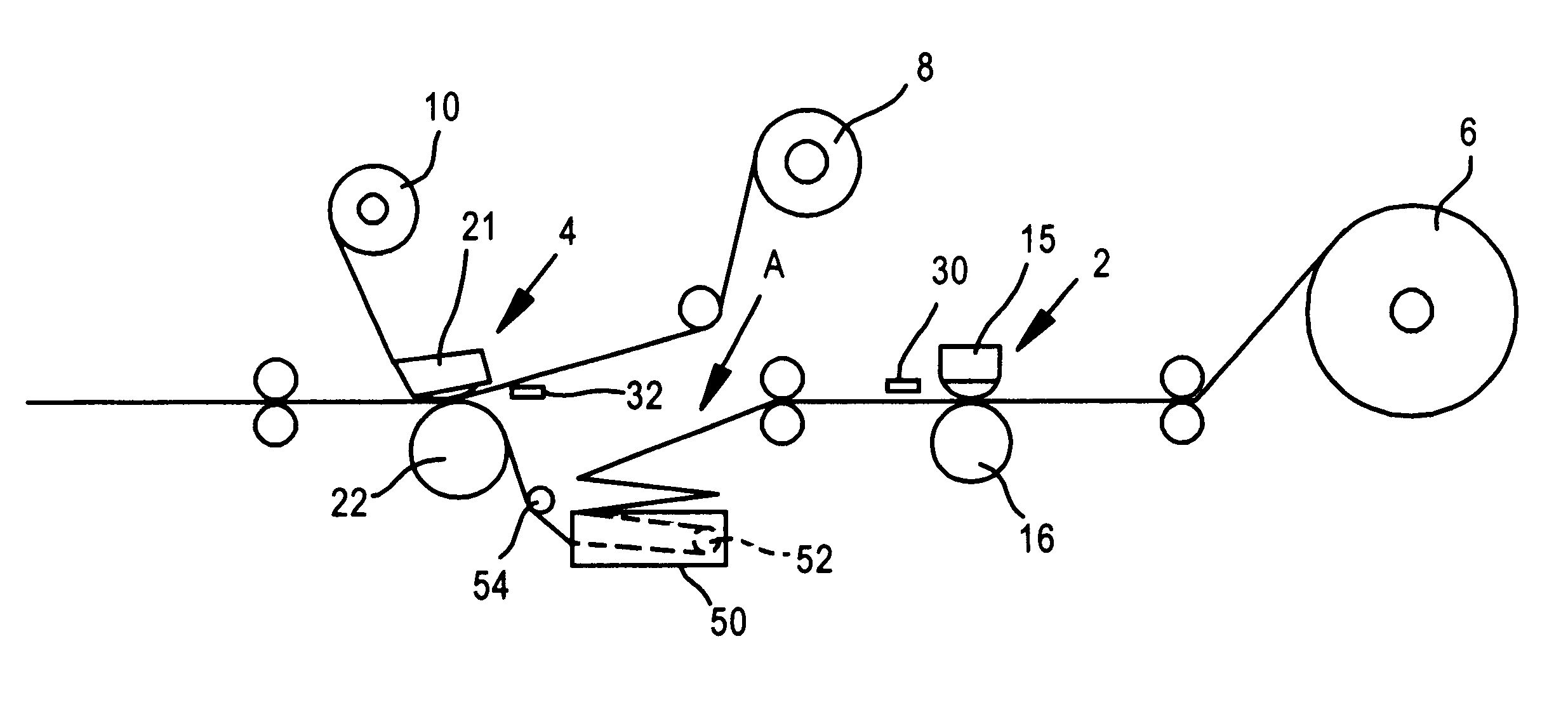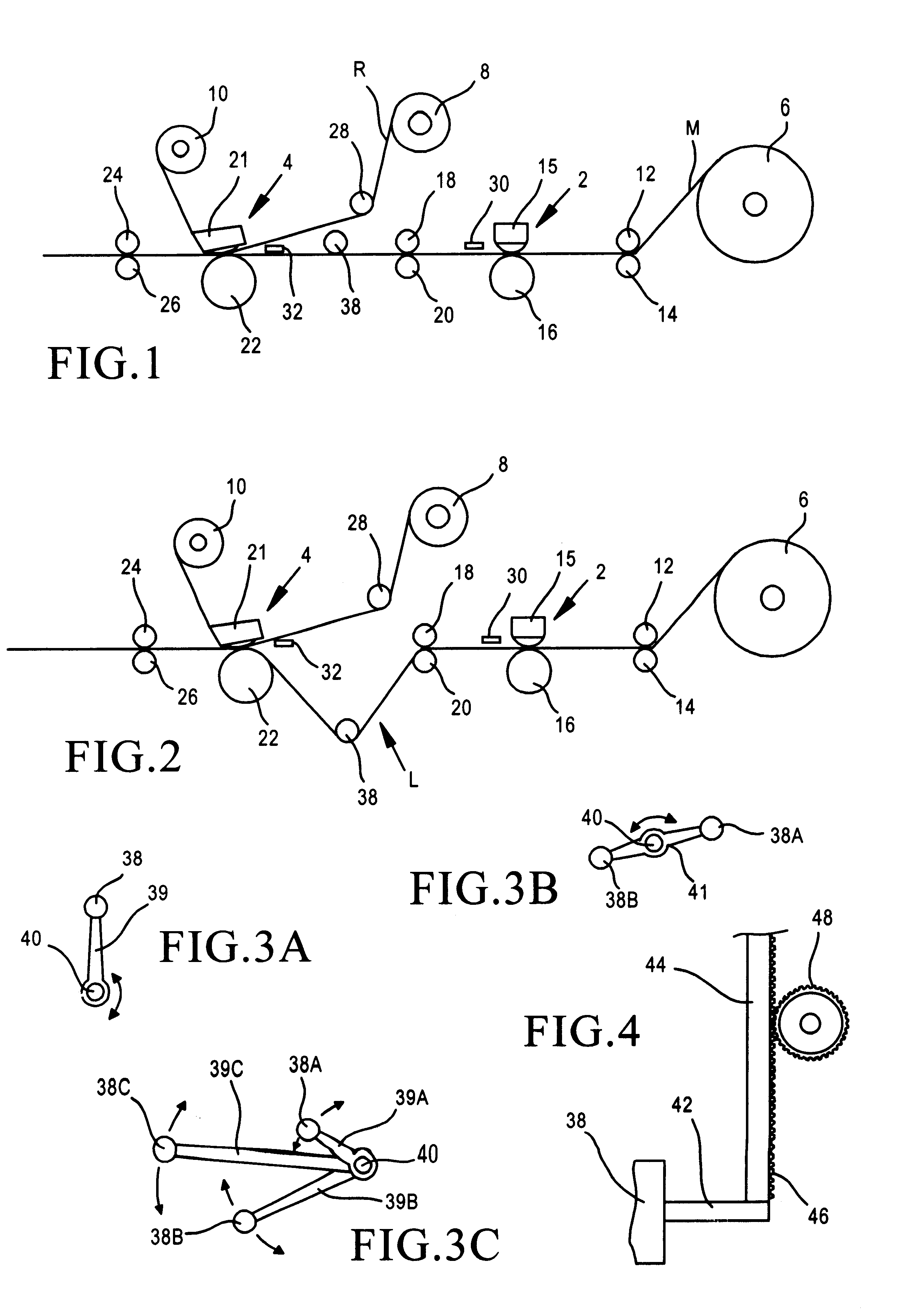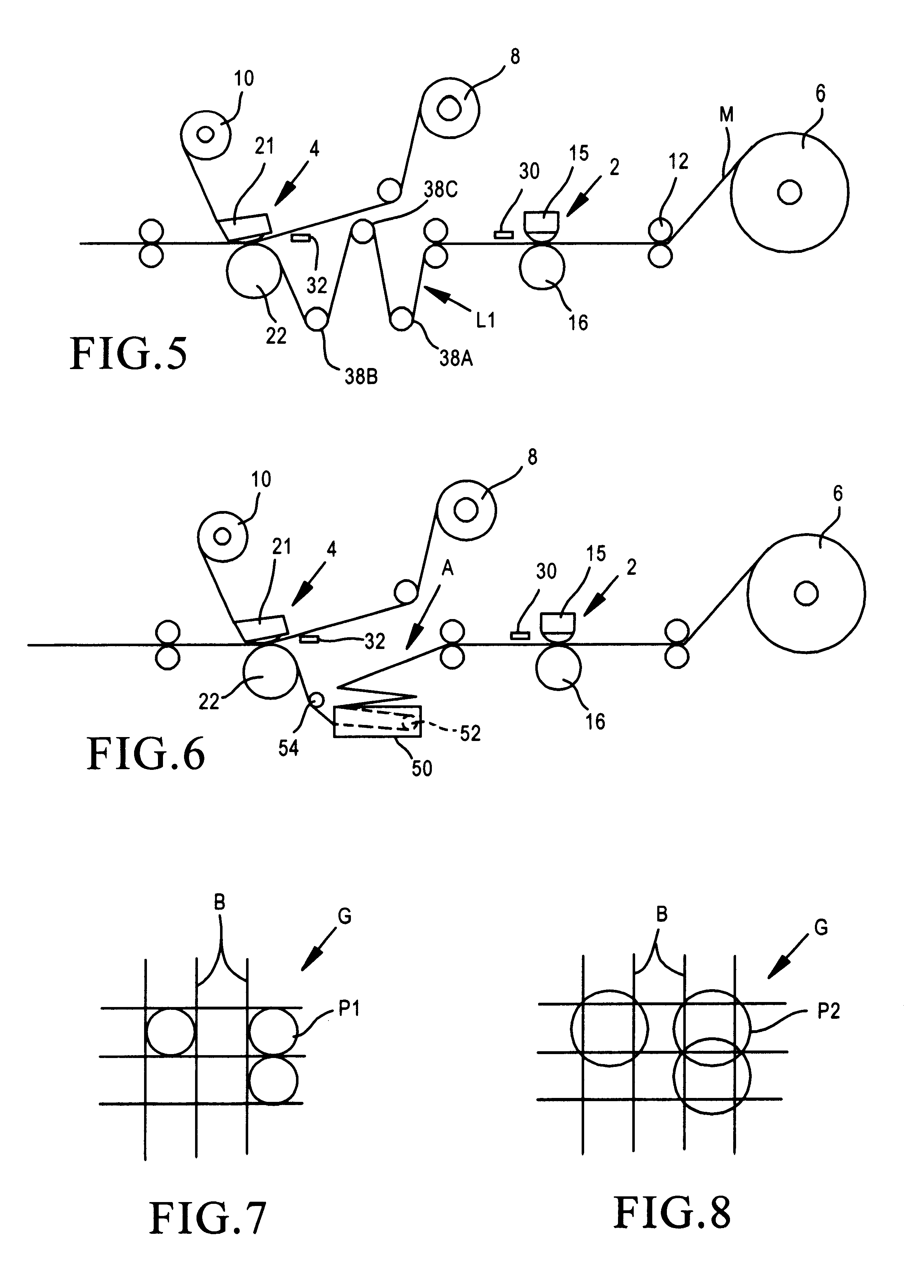Dual technology printer
a printer and dual technology technology, applied in the field of dual technology printers, can solve the problems of high printer cost or low throughput, severe limitations on the print quality of color images and/or bar code images, and hurting readability
- Summary
- Abstract
- Description
- Claims
- Application Information
AI Technical Summary
Benefits of technology
Problems solved by technology
Method used
Image
Examples
Embodiment Construction
The drawings show printing apparatus that incorporates the best modes for carrying out the apparatus of the invention currently known to the applicant. The drawings also illustrate the best modes for carrying out the method of the invention currently known to the applicant.
FIGS. 1 and 2 are schematic representations of the working portions of a printer incorporating a first embodiment of the invention. The mechanism shown in FIGS. 1 and 2 includes conventional printer elements as well as novel elements that are a part of the present invention. The novel elements include the presence of two print stations, a first upstream print station 2 and a second downstream print station 4. The conventional elements include a supply roll 6 from which a continuous strip of media M is supplied to the print stations 2, 4. They also include a supply roll 8 from which a thermal transfer ribbon R is drawn for use at the second print station 4. The ribbon R moves from the supply roll 8 around a guide r...
PUM
 Login to View More
Login to View More Abstract
Description
Claims
Application Information
 Login to View More
Login to View More - R&D
- Intellectual Property
- Life Sciences
- Materials
- Tech Scout
- Unparalleled Data Quality
- Higher Quality Content
- 60% Fewer Hallucinations
Browse by: Latest US Patents, China's latest patents, Technical Efficacy Thesaurus, Application Domain, Technology Topic, Popular Technical Reports.
© 2025 PatSnap. All rights reserved.Legal|Privacy policy|Modern Slavery Act Transparency Statement|Sitemap|About US| Contact US: help@patsnap.com



